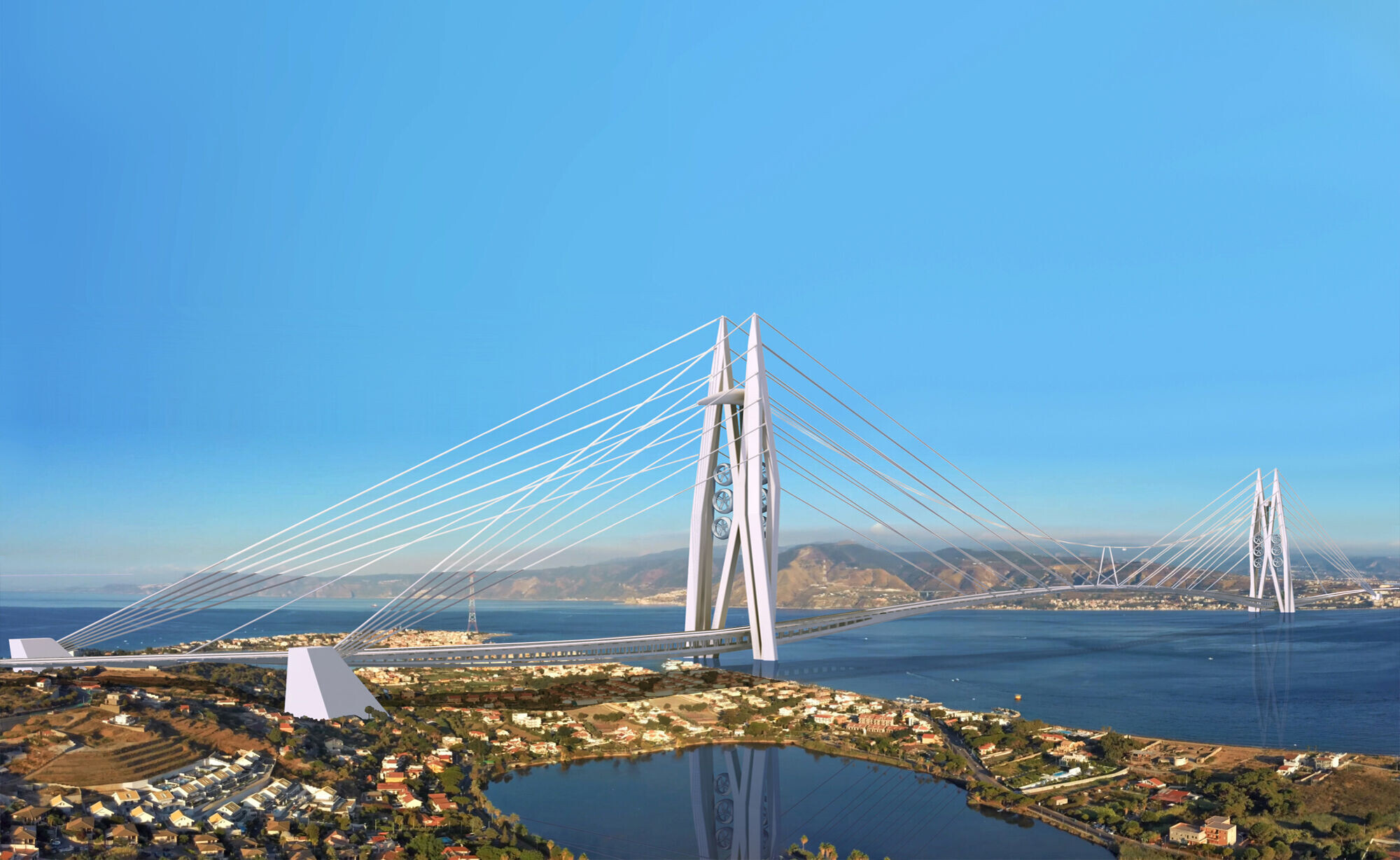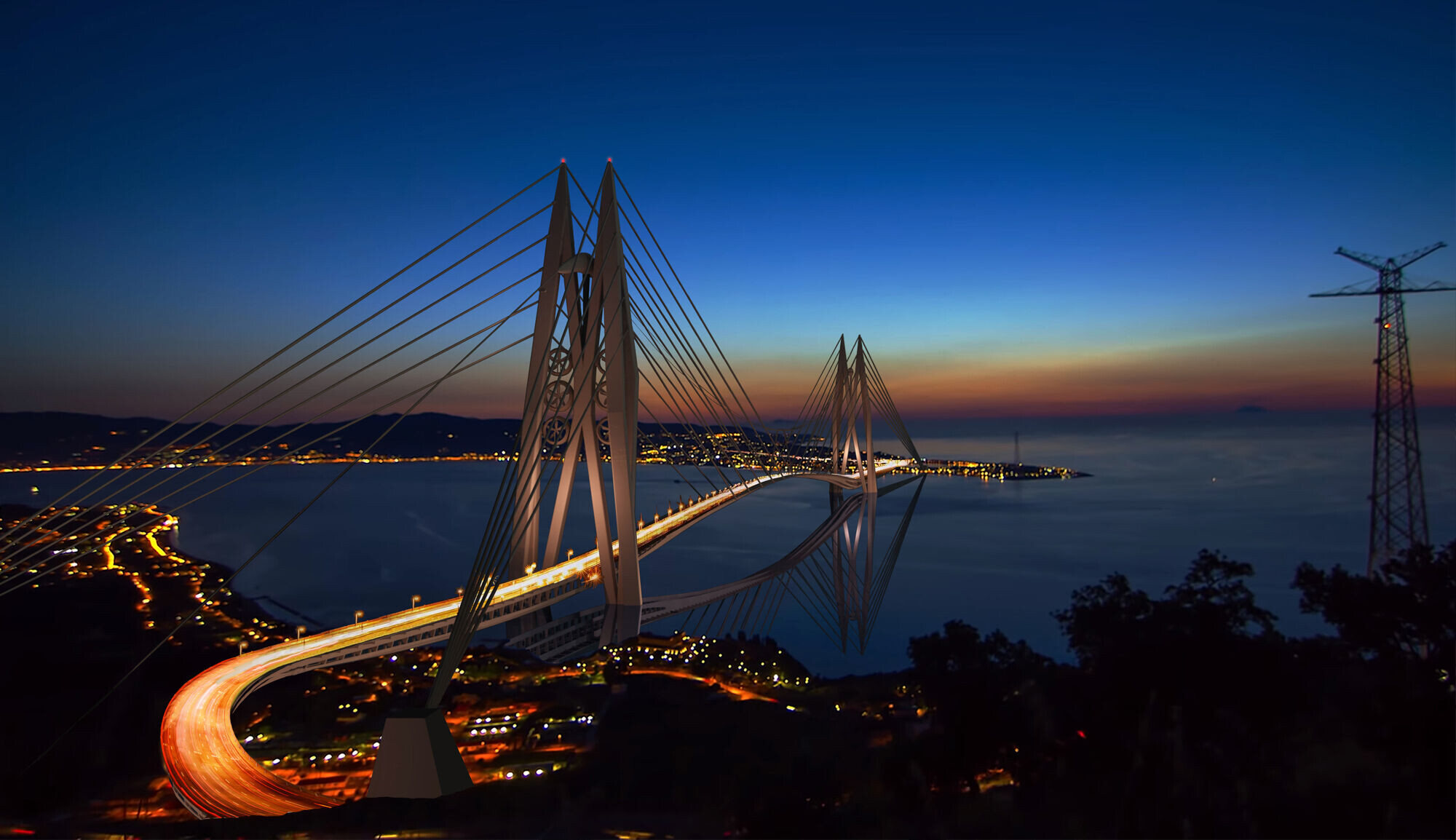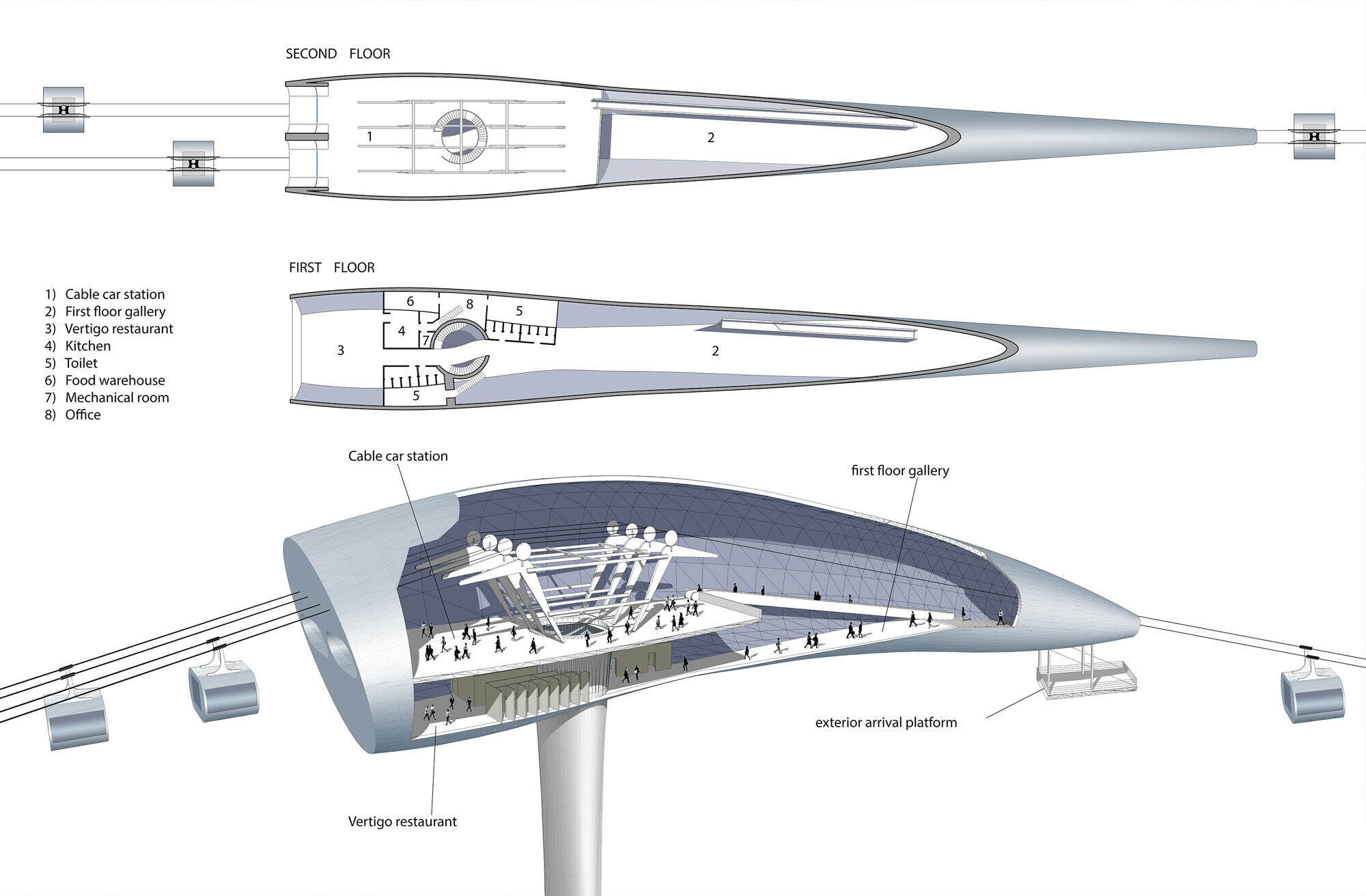A bridge connecting Sicily and southern Italy is an ancient dream that has never become a reality.

Although an old architectural competition did produce a number of interesting ideas for this bridge, until now the projects that the Italian government has taken into consideration have been merely technological structures consisting of engineering elements devoid of aesthetic pathos, a long way from the genius loci of this place.

My design proposal for this bridge was created in response to two needs: firstly, an aesthetic/artistic need; I believe that since very large infrastructure works interact with the natural landscape, they must be conceived from a carefully artistic viewpoint. Secondly the need, with this project, to offer a different point of view that is less engineering-based and is more artistic, and that evokes associations with the cultural and mythological tradition of this place at the centre of the Mediterranean.

The starting point for my project proposal was to research that mythology. I examined the fantastic tales about this evocative place that were told by the ancient Greeks They believed that two enormous sea monsters lived here, Scylla and Charybdis: creatures that tormented navigators and endangered them as they navigated through the Strait of Messina. As Homer tells us in the Odyssey, the two beasts overwhelmed even Ulysses and his crew of sailors.My main reference for the project was this strong association of the site with the presence, in mythological memory, of the two giant sea creatures. I would say it was natural to transform the ancestral memory of the monsters Scylla and Charybdis into two characterising architectural landmarks, placed on either side of the Strait.

As the two mythological monsters took shape in my imagination they became the supporting towers of the bridge. That explains their vaguely anthropomorphic appearance, seeming to resemble terrifying guardians protecting the Strait of Messina: twin towers conceived as markers set in the landscape, representing the location.Between the colossal columns that support the bridge, six large wind turbines recall the six dog-headed snakes that were attached to the body of the monster Scylla. These turbines are designed to generate clean electricity, making the bridge self-sufficient in energy.As designed, the towers are 396m high and 3,200m apart. If built, this would be the longest bridge in the world, completely suspended and supported by large steel cables: a significant work of infrastructure that would directly connect the most important cities of southern Italy.

The project envisages various means of transport for crossing the bridge: cars, buses, trucks, and trains or in a more spectacular way, a cable car system that passes through the heads of the two Scylla and Charybdis towers. At the tops of the towers will be two Scylla and Charybdis head buildings, suspended at a height of 300m. Inside them will be two cable car stations and two Vertigo restaurants, thereby also making the bridge a tourist attraction with the ability to generate its own economic patrimony.The Scylla and Charybdis bridge should not be a mere bridge whose only purpose is to provide a crossing between two regions; above all it should be a recognisable marker in the landscape, one that can also become an economic attractor for the whole of southern Italy.









































